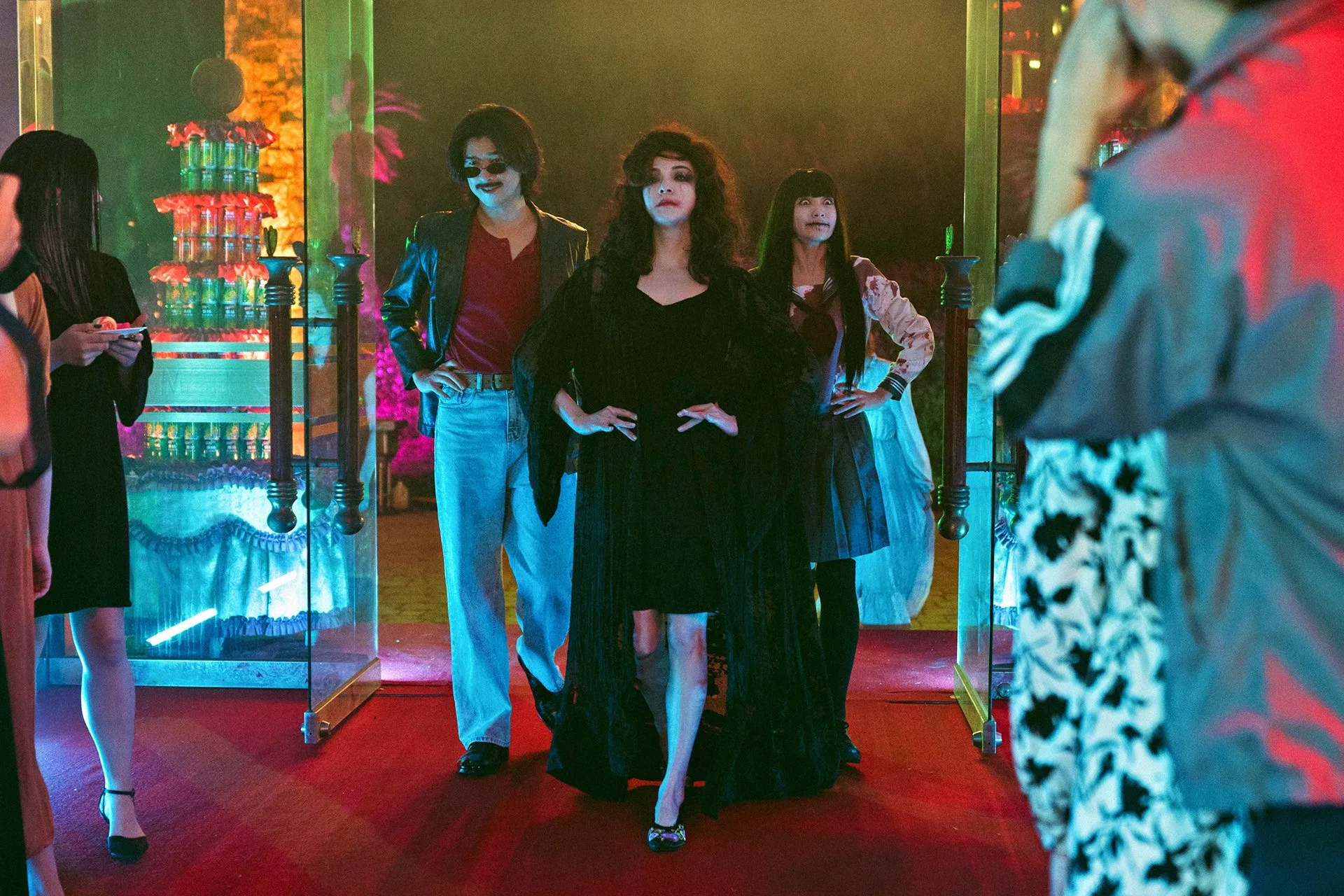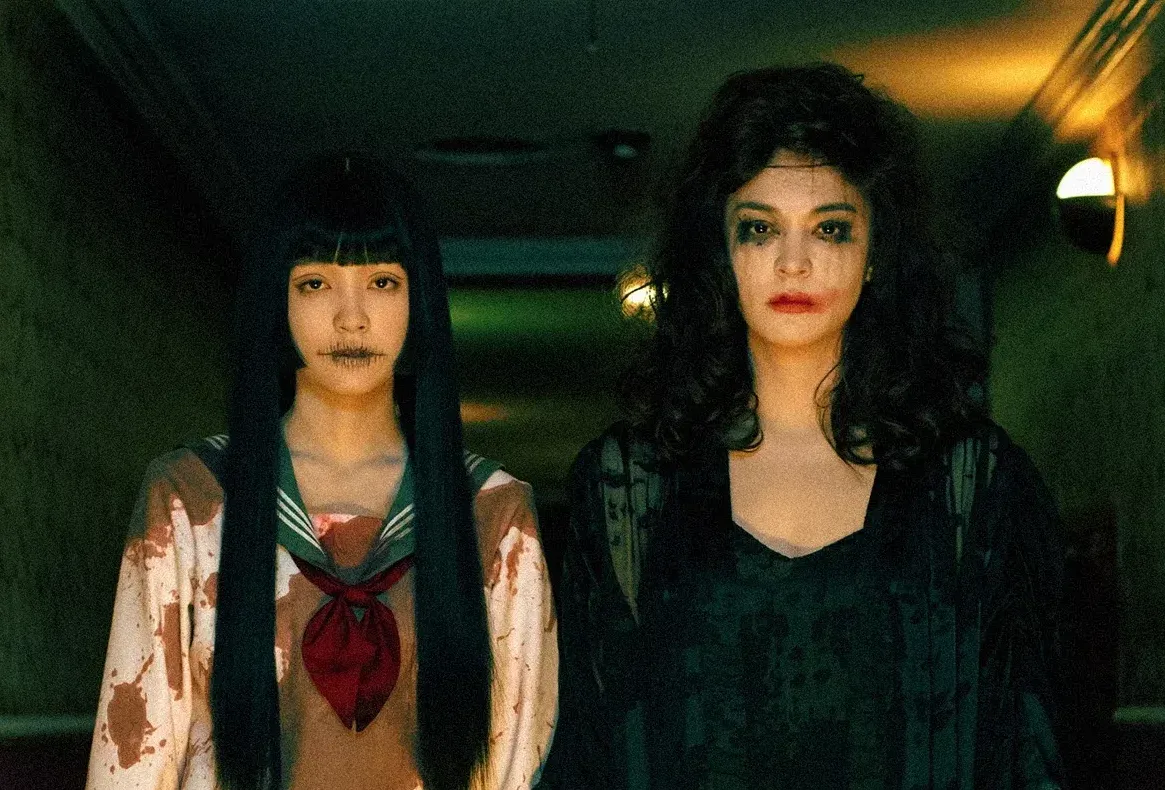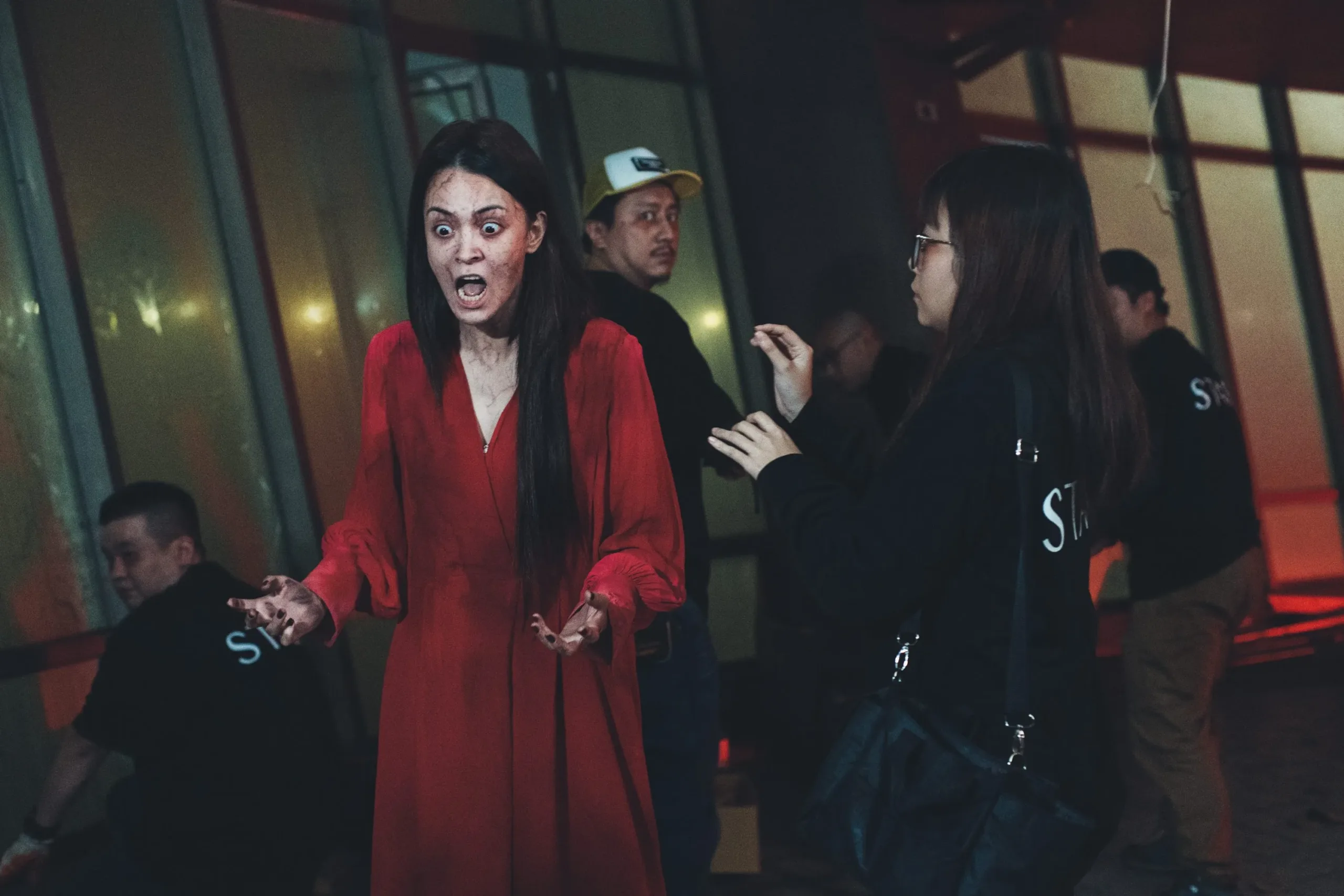“Dead Talents Society,” directed by John Hsu and co-written with Kun-Lin Tsai, is a refreshing and playful take on the horror-comedy genre that expertly blends elements of East Asian folklore with contemporary societal concerns. The film introduces us to The Rookie, a humble teenage ghost who is portrayed by Gingle Wang and who grapples with the existential prospect of being forgotten by her family age.
In a world where ghosts fight for visibility and importance, she must perfect the art of scaring the living to ensure her afterlife—a haunting license, if you will. This narrative concept sets the setting for a series of humorous misadventures and reflects our modern fixation with fame and social media.
As Hsu walks us through this strange afterlife, the film skillfully portrays modern youth’s pressures. It captures a generation grappling with the demands of visibility and the fear of obscurity, much like the characters in Noah Baumbach’s works, in which personal identity frequently collides with societal expectations.
The film’s exploration of these themes, packaged in a whimsical wrapper, allows it to transcend genre boundaries. While it makes viewers laugh, it also invites them to reflect on their own lives and the never-ending desire for relevance—a characteristic of modern anxiety.
The Concept and Setting
At the heart of “Dead Talents Society” lies a wonderfully imagined afterlife in which ghosts are more than just lingering spirits; they are competitive creatures competing for visibility and reputation in a world driven by the same pressures that affect the living. The film takes us to this ghostly planet, a vibrant, hilarious landscape reminiscent of Tim Burton’s whimsical aesthetics, where spectres compete for “haunting licenses.”
This innovative take on the traditional ghost narrative turns the act of haunting into a performance art narrative reminiscent of modern talent competitions. The stakes are high: Without a haunting license, a ghost faces oblivion, a destiny that echoes the concerns of man in our fame-obsessed culture.
This notion serves as a strong cultural critique, reflecting the absurdity of our social media-driven existence. The battle among ghosts to startle humans and be filmed on video echoes today’s obsessive pursuit of likes and followers.
It’s a sarcastic yet moving look at how visibility correlates to value, a theme that resonates strongly with today’s audience. The ghosts in “Dead Talents Society” symbolize the anxieties of a generation grappling with the fear of being forgotten in an ever-crowded digital realm, much like the characters in Noah Baumbach’s films who navigate their identities via the lens of societal expectations.
Hsu’s film visually captures this frenzied energy with dynamic editing and a kaleidoscope of colours that enhance the whimsical yet spooky ambience. The sound design enhances this experience by merging comic sound effects with a playful horror soundtrack that recalls the appeal of classic horror comedies. This combination of visual and audio aspects immerses viewers in the ghostly competition and reinforces the film’s underlying indictment of our current fixation with performance and recognition.
Character Analysis
The Rookie (Gingle Wang), embodying the struggles of a generation caught between the desire for recognition and the fear of obscurity, emerges as the heart of “Dead Talents Society.” She is trying to establish her worth in a world where visibility determines value, having recently died and grappling with her new ghostly existence.
Gingle Wang beautifully captures The Rookie’s awkwardness and innocence, creating a character who resonates with anybody who has ever felt like an outsider. Her journey from a shy, insecure spirit to a capable ghost is a touching development arc. The Rookie’s initial failures in haunting reflect her fears. Still, as she learns to accept her unique style, she represents a push against societal standards, mirroring many current artists’ journeys to find their voice.
On the other hand, Catherine (Sandrine Pinna) embodies the perils of fame as a once-heralded ghost star fighting to stay relevant. As she alternates between mentor and rival, her character is rich in emotional complexity. Pinna’s portrayal highlights the complexities of Catherine’s personality; she is both loving and highly competitive, reflecting the duality of mentorship in a world where success is transitory.
Catherine’s rivalry with Jessica, a younger ghost representing the new wave of hauntings, adds layers to her character. Their relationship is a metaphor for the generational dynamics present in any creative sector, making Catherine’s final transition both relatable and uplifting.
Supporting characters like Makoto (Bo-Lin Chen) and Camilla (Bai Bai) further enrich the narrative. Makoto, the eccentric talent scout, serves as a bridge between the world of established ghosts and The Rookie. His unique appeal provides comic relief while also anchoring the film’s more serious themes.
While slightly underdeveloped, Camilla represents the wealthy elite who benefit from their status, contrasting The Rookie’s honest struggle. Together, these characters enhance the film’s humour and underline its primary themes of identity and recognition, illustrating how every ghost, like every artist, must navigate their own journey for validation in a crowded space.
Through this ensemble, “Dead Talents Society” creates a complex exploration of ambition, mentorship, and the desire to be seen—elements that resonate strongly in both independent and mainstream cinema today.
Tone and Style
“Dead Talents Society” skillfully blends humour and horror in a new and familiar way, allowing the film to engage audiences on numerous levels. The comic parts are interwoven with horror cliches, creating a great contrast that keeps viewers entertained and slightly on edge.
One memorable sequence is a training montage in which The Rookie learns the art of scaring the living, merging slapstick humour with genuine horror moments. The creepy backdrop of a haunted hotel emphasizes the absurdity of her attempts as she fumbles through various haunting techniques, making for a laugh-out-loud, amusing, and shockingly scary sequence.
This genre fusion is reminiscent of classic horror comedies, but Hsu creates a unique place pertinent to contemporary anxieties about visibility and success. The tonal shifts are handled with care, allowing for moments of meditation in the middle of mayhem. For example, when The Rookie accidentally terrifies many influencers in a particularly violent yet comic scene, the film alludes to our contemporary fixation with online presence while maintaining a light and playful tone.
Visually, the film is inspired by Tim Burton’s unique style, vibrant colour palette, and exaggerated character designs that conjure a sense of whimsical horror. The cinematography plays a critical role in accentuating the humorous tone; wide-angle images emphasize the absurdity of the ghostly battle, while playful camera angles enable viewers to immerse themselves in this eccentric afterlife.
The set design, from the neon-lit haunted hotel to the exaggerated items utilized in the ghostly talent competition, enriches the visual storytelling, creating an immersive world that excites and entertains. By offering a visually compelling and conceptually rich narrative, “Dead Talents Society” stands as a testimony to the art of genre fusion.
Themes and Messages
“Dead Talents Society” delves deeply into the quest for recognition, offering a harsh critique of the societal pressures that govern our worth in the age of social media. The film skillfully depicts how the characters, particularly The Rookie, navigate a world where visibility equals validation. This quest for fame is not just a backdrop; it drives the narrative and shapes the characters’ identities.
As she grapples with the fear of being forgotten in a fast-paced, hyper-competitive world, The Rookie’s dogged pursuit of a driving license serves as a metaphor for her struggles with self-worth. Her journey resonates with anybody who has felt the weight of expectations, echoing the anxieties of a generation that evaluates success solely by likes and followers.
The emotional relevance of the film goes beyond individual goals, emphasizing the value of community and human connection. As The Rookie grows, she learns that true validation comes not from public awards but from her relationships with her ghostly peers.
Catherine’s shift from a fading star to a supporting mentor exemplifies the film’s message: connections are what ultimately root us, even in a whimsical world where the undead vie for attention. This nuance is reminiscent of Greta Gerwig’s films, where the emphasis on individual relationships frequently precedes the quest for societal approbation.
Furthermore, the film’s exploration of self-worth challenges the concept that success is a solitary undertaking. Instead, it contends that accepting vulnerability and cultivating community can lead to a more fulfilling existence. By incorporating these themes into the fabric of a horror-comedy, Hsu and Tsai not only entertain but also prompt careful reflection on our own lives, encouraging viewers to contemplate what it truly means to be noticed and respected in a world dominated by superficial metrics of success.
Cultural References and Influences
“Dead Talents Society” serves as a vibrant tapestry of horror genre homages, with a special focus on the rich legacy of Asian horror cinema in the modern age. The film expertly blends common themes, such as tainted videotapes reminiscent of “The Ring” and ghostly figures shrouded in the disturbing aesthetics of Japanese horror.
For genre lovers who value the nods to earlier works, these references place the film in a larger cultural context and create layers of involvement. For example, Jessica, a character who acquires fame through a jump-scare video, is a playful spin on the viral nature of current horror, blurring the lines between conventional scares and modern horror.
However, what elevates these references are the film’s smart in-jokes and subtle humour, which enable viewers to laugh while reflecting on the absurdity of the phantom entertainment industry. This self-awareness is reminiscent of works by film directors like Edgar Wright, who expertly incorporate cultural references into their narratives.
“Dead Talents Society” has great crossover appeal on a global scale. Its themes of identity, validation, and the quest for cultural recognition resonate across cultural boundaries.
The film’s exploration of societal pressures, particularly in the age of social media, represents a generational shift that many people, regardless of geography, can relate to. The film captures a mood that is felt worldwide, making it not merely a local victory but a story with global appeal in an era where visibility frequently determines one’s worth. This convergence of local culture and worldwide themes reflects the best of independent cinema, striving for both authenticity and wider resonance in today’s media ecosystem.
Conclusion
“Dead Talents Society” is a vibrant and original horror-comedy, expertly mixing humour with serious social satire. The film excels in its unique idea, in which the afterlife becomes a competitive arena for ghosts, highlighting the ludicrous lengths people will go to gain recognition.
The characters, notably The Rookie and Catherine, are well-developed. They embody relatable struggles with identity and validation in a world that frequently favors authenticity over authenticity.
Furthermore, the film’s visual style, reminiscent of Tim Burton’s whimsical aesthetics and its creative sound design, enhances both the comic and horror elements, creating an engaging viewing experience. Hsu’s ability to weave cultural references with universal pressures helps “Dead Talents Society” resonate beyond its Taiwanese roots, appealing to a worldwide audience grappling with similar societal pressures.
This film is more than just entertainment; it reflects our anxieties about fame and self-worth. I wholeheartedly suggest “Dead Talents Society” to anyone searching for a film that is entertaining, intriguing, and thought-provoking. Its lovely mix of humour and intelligent criticism ensures that it will stay with viewers long after the credits have rolled, making it an important addition to independent and mainstream film.
The Review
Dead Talents Society
"Dead Talents Society" is a fascinating blend of horror and comedy that cleverly examines societal pressures surrounding fame and recognition. It mixes humour with emotional themes of identity and validation, using fascinating characters and a visually appealing style reminiscent of classic Asian horror films. Director John Hsu creates a whimsical yet thought-provoking narrative that resonates globally. This film is a refreshing twist on the genre, making it a must-see for entertainment and substance.
PROS
- Unique and imaginative premise blending horror and comedy.
- Engaging character arcs, particularly for The Rookie and Catherine.
- Strong visual aesthetics reminiscent of Tim Burton’s style.
- Relevant social commentary on fame and recognition.
- Clever cultural references that enhance viewer engagement.
CONS
- Some supporting characters feel underdeveloped.
- A few tonal shifts may disrupt narrative flow.
- The pacing could benefit from tighter editing in certain sections.





















































